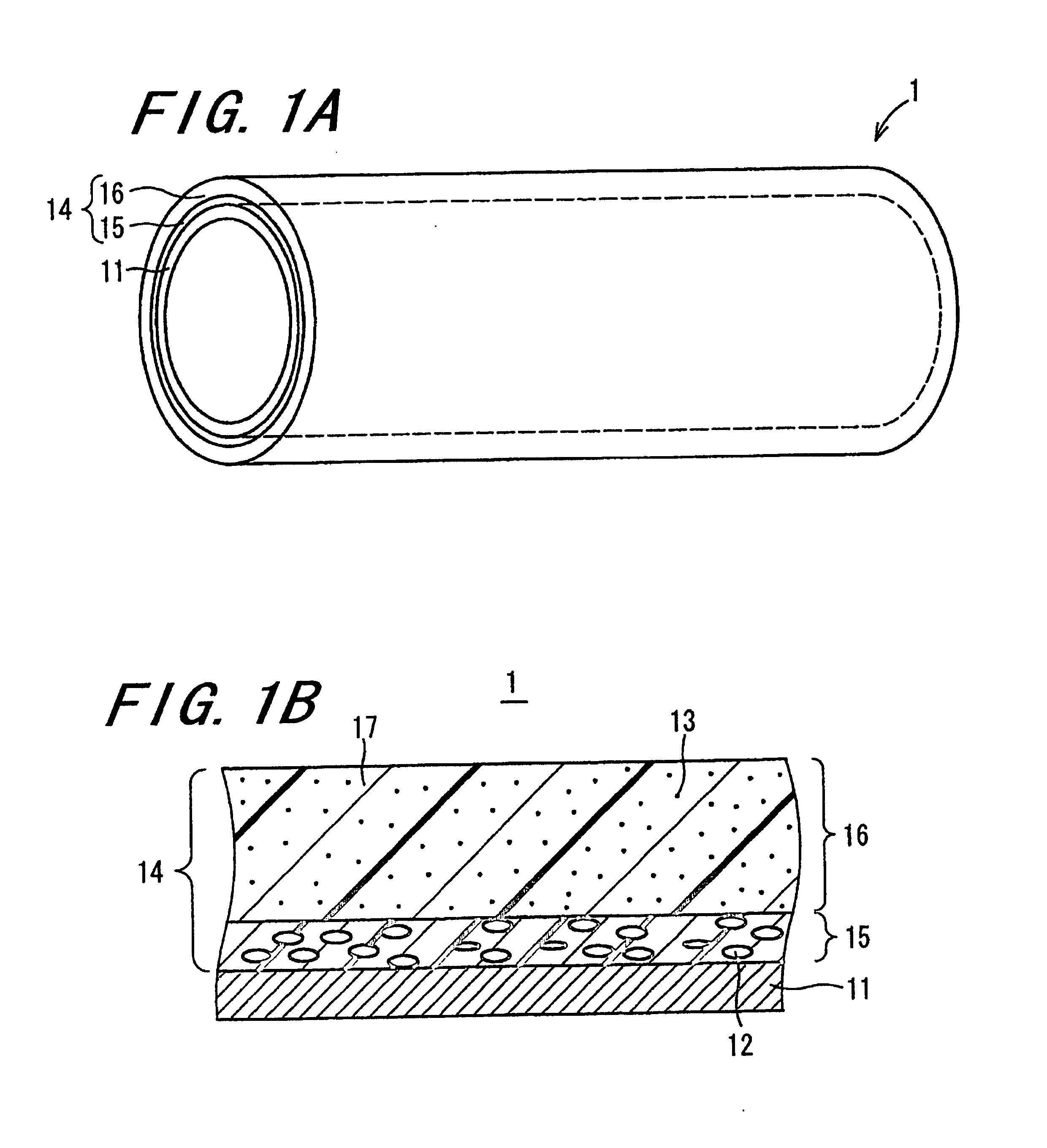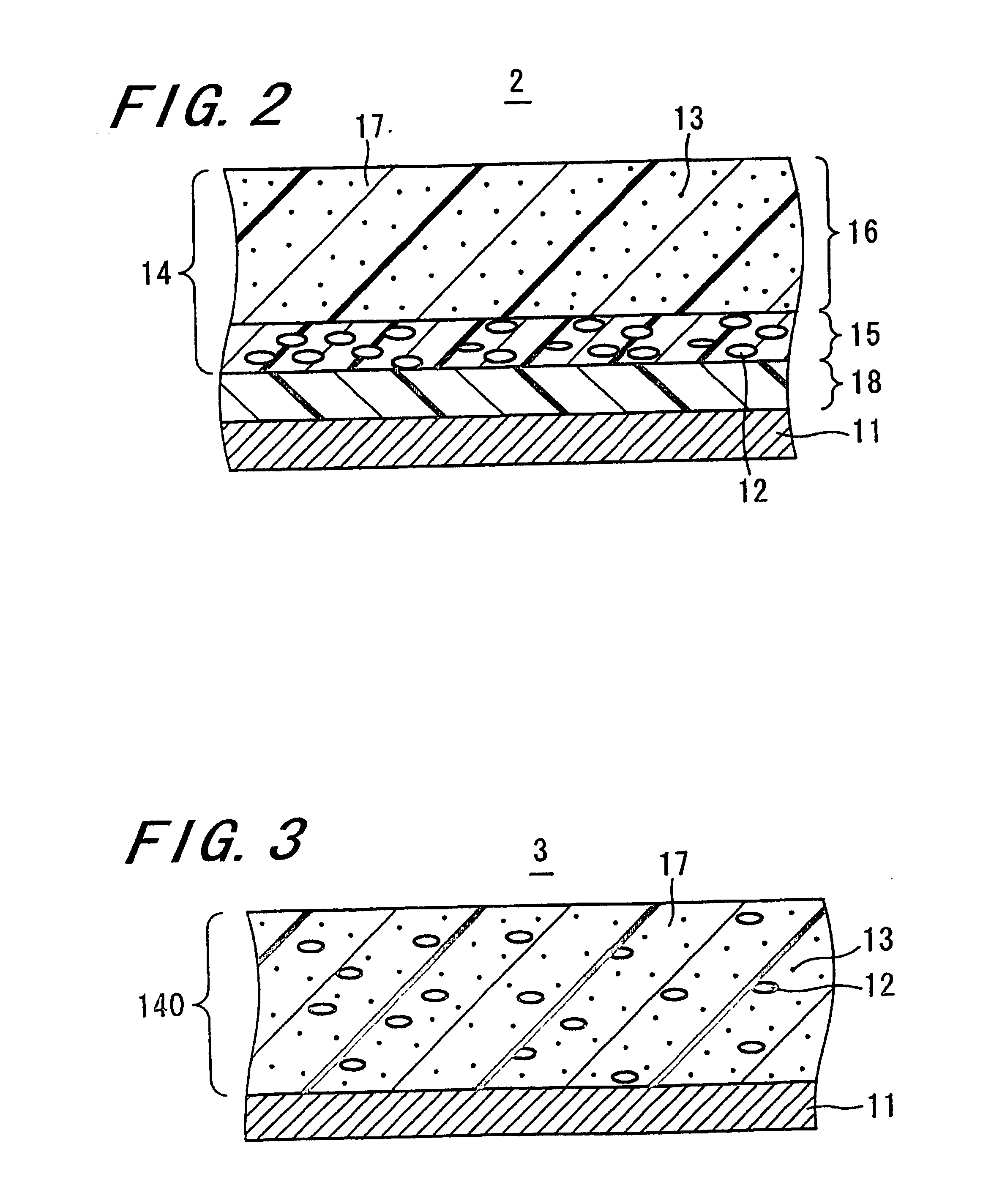Electrophotographic photoreceptor and image forming apparatus including the same
a photoreceptor and photoreceptor technology, applied in the direction of electrographic process, instruments, corona discharge, etc., can solve the problems of insufficient sensitivity and responsivity of the photoreceptor, inability to avoid dielectric breakdown of the photosensitive layer, poor production efficiency, etc., to reduce the filming, prolong the life and reduce the photosensitive layer of the electrophotographic photoreceptor
- Summary
- Abstract
- Description
- Claims
- Application Information
AI Technical Summary
Benefits of technology
Problems solved by technology
Method used
Image
Examples
preparation example
Preparation Example 1
Preparation of Exemplified Compound No. 1
preparation example 1-1
Preparation of Enamine Intermediate Product
[0321] 23.3 g (1.0 equivalent amount) of N-(p-tolyl)-α-naphthylamine represented by the following structural formula (9), 20.6 g (1.05 equivalent amount) of diphenylacetaldehyde represented by the following structural formula (10), and 0.23 g (0.01 equivalent amount) of DL-10-camphor sulfonic acid were added to 100 mL of toluene and heated to conduct reaction for six hours while removing by-produced water out of the system under azeotropic boiling with toluene. After the completion of the reaction, the reaction solution was concentrated to about 1 / 10, which was gradually dropped into 100 mL of hexane under violent stirring to form crystals. The resultant crystals were separated by filtration and cleaned with cold ethanol to obtain 36.2 g of a pale yellow powdery compound.
[0322] As a result of analyzing the obtained compound by liquid chromatography-mass spectrometry (simply referred to as: LC-MS), since a peak corresponding to a molecula...
preparation example 1-2
Preparation of Enamine-Aldehyde Intermediate Product
[0324] 9.2 g (1.2 equivalent amount) of oxyphosphorus chloride was added gradually under ice cooling into 100 mL of anhydrous N,N-dimethylformamide (DMF), and stirred for about 30 min to prepare a Vilsmeier reagent. 20.6 g (1.0 equivalent amount) of the enamine intermediate product represented by the structural formula (11) obtained in Preparation Example 1-1 under ice cooling into the solution gradually. Then, it was gradually heated to elevate the reaction temperature to 80° C. and stirred while heating so as to keep at 80° C. for 3 hours. After the completion of the reaction, the reaction solution was allowed to cool and added gradually to 800 ml of an aqueous 4N sodium hydroxide solution to form precipitates. The resultant precipitates were separated by filtration, washed with water sufficiently and recrystallized with a mixed solvent of ethanol and ethyl acetate to obtain 20.4 g of a powdery yellow compound.
[0325] As a resul...
PUM
| Property | Measurement | Unit |
|---|---|---|
| voltage | aaaaa | aaaaa |
| voltage | aaaaa | aaaaa |
| voltage | aaaaa | aaaaa |
Abstract
Description
Claims
Application Information
 Login to View More
Login to View More - R&D
- Intellectual Property
- Life Sciences
- Materials
- Tech Scout
- Unparalleled Data Quality
- Higher Quality Content
- 60% Fewer Hallucinations
Browse by: Latest US Patents, China's latest patents, Technical Efficacy Thesaurus, Application Domain, Technology Topic, Popular Technical Reports.
© 2025 PatSnap. All rights reserved.Legal|Privacy policy|Modern Slavery Act Transparency Statement|Sitemap|About US| Contact US: help@patsnap.com



